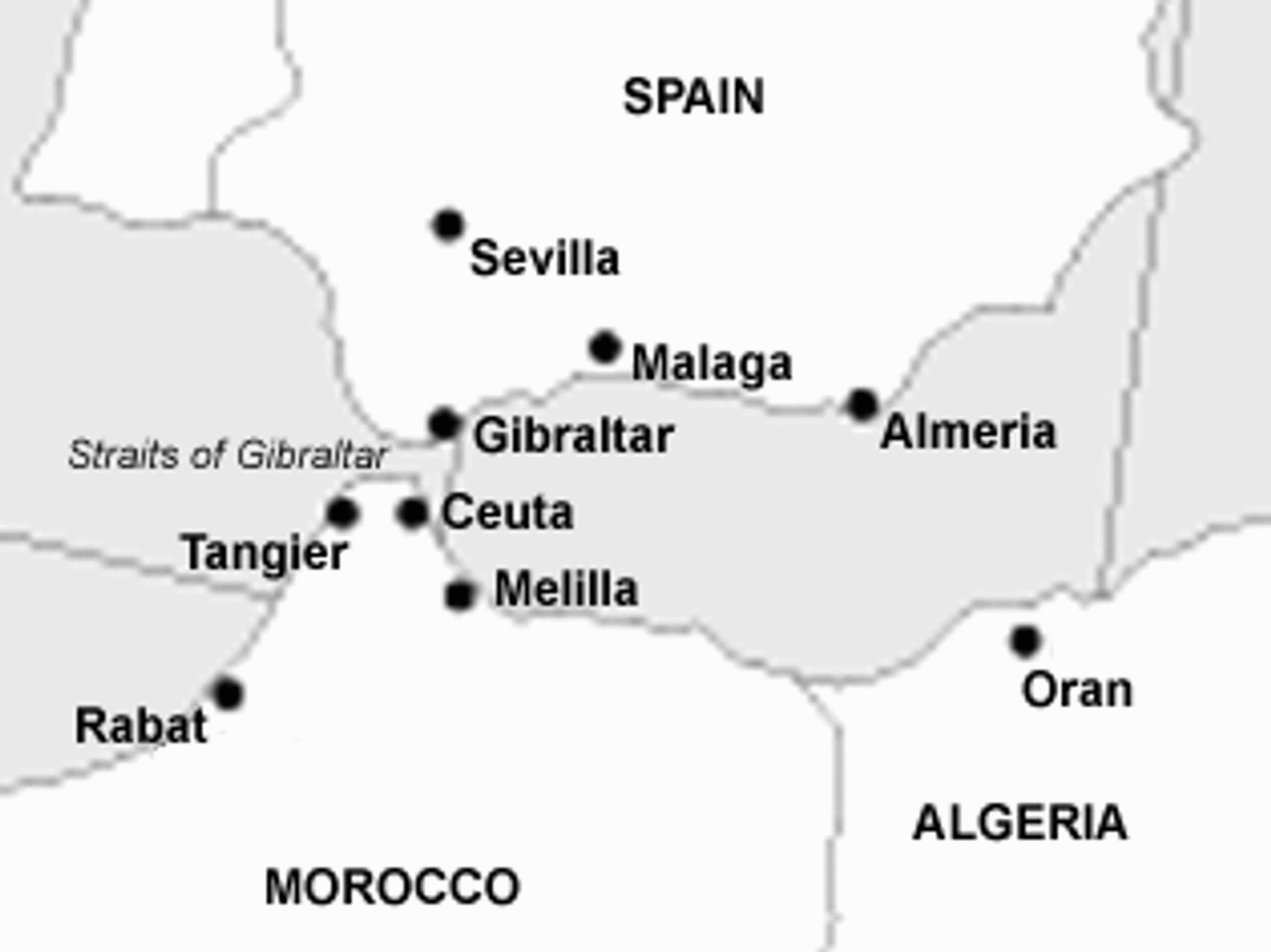To reinforce its role as one of the gatekeepers of 'Fortress Europe', Spain is building its own version of the Berlin Wall. Two 4 metre-high steel walls, 4 metres apart and 7 kilometres in length are being constructed around the Spanish enclave of Melilla, in the north of Africa. The new border fortifications are designed to prevent desperate migrants from entering Spanish colonies in Morocco, as a stepping stone to Europe. The wall will be fitted with visual and acoustic sensors, turrets and 70 closed circuit cameras. It will replace the old barbed wire fence through which groups of African migrants were able to enter Melilla.
 One of the two Moroccan cities still under Spanish sovereignty, Melilla has an area of 20 square kilometres with a population of 56,600. The other, Ceuta, is 13 square kilometres with a population of 67,615.
One of the two Moroccan cities still under Spanish sovereignty, Melilla has an area of 20 square kilometres with a population of 56,600. The other, Ceuta, is 13 square kilometres with a population of 67,615.
The Mayor of Melilla, Enrique Palacios, is calling for a common European offensive against immigrants. 'If we are the border with Europe, they will have to collaborate in the solution of the problem,' he said. Palacios does not believe that a frontier of 'such strategic importance for the European Union' should be guarded by conscript soldiers, as it is now.
Living conditions for the people waiting on the other side of this wall are appalling. Spanish newspapers report hundreds of people from sub-Saharan Africa waiting in the pine woods of the Gugur' mountain bordering Melilla for an opportunity to enter Spain and Europe. They are without food or shelter. Hiding in the woods, they wait for nightfall so they can come down into the kitchen gardens of the already impoverished Moroccans living nearby to try and steal food in order to survive.
Some years ago the Gugur' mountain was populated with monkeys that tourists used to feed. According to the people in the area, hundreds of monkeys would run around the woods, crossing the roads in front of cars and even come down into Melilla itself during the dry season to look for food and water. Now there are none. Local people believe the waiting migrants have eaten them. They even report their dogs disappearing mysteriously.
These nightmarish stories are being used by the Spanish and Moroccan authorities to manipulate public opinion into accepting the building of the wall. The situation has intensified the tensions and divisions between the Moroccan population and the migrants from sub-Saharan Africa.
Many Moroccans also risk their lives attempting to flee poverty and disease. Thousands regularly try to cross the Strait of Gibraltar in small handmade motor boats ( panteras), only to be hunted down by border police and coast guards. Human rights organisations report over 1,000 people losing their lives in the Strait of Gibraltar in the last five years trying to cross to Spain. Even this estimate is thought to be conservative. In the first six months of this year, 7,000 immigrants were arrested and 31 drowned or disappeared. Of these, only eight bodies were recovered.
These figures do not include the 38 Moroccans who drowned at the end of June. Despite being the worst sea accident in the region, it received scant public acknowledgement by the governments of Spain and Morocco. Those killed were mainly below the age of 26, from Nador, Rachidia and Bami-Mehallarl, travelling on board a small pantera. According to one survivor, Hamid Ouli, when they met up with the ship supposed to take them to Almeria in Spain, the skipper refused to pick them up. Fearing that they would jump on board anyway, he rammed their fragile boat throwing the occupants into the sea. Only five passengers survived in the rough waters.
The disaster only came to light when bodies began to appear eight or ten days later on the Moroccan coast. It took several days to pick up all the swollen bodies, with small pleasure craft and fishing boats helping in the recovery.
Opposition parties, trade unions and human rights organisations have accused the Spanish government of refusing assistance. The spokesman for SOS Racismo, José Antonio Moreno, criticised the inhumanity of the Spanish authorities. 'It looks as if they were only called in by fishermen from Melilla who kept finding floating bodies every day while on their way to work. To permit bodies to remain floating between two [national] waters for 10 days is an intolerable act by a democratic state,' he said.
A further catastrophe was narrowly avoided last August when 23 immigrants from Morocco were rescued by a passenger ship just as their pantera was sinking. Passengers on the ship said they would find it difficult to forget the terror in the faces of those rescued.
Dangers to the lives of those emigrating from Africa do not stop at the other end of the Strait of Gibraltar. Eleven people from the Magreb died and six were injured on March 16 last year in a horrific road accident. The lorry in which they were travelling crashed and turned over on the motorway near Figueres in Girona. The vehicle was packed with bottles of perfume, which broke on impact. The immigrants died from lacerations produced by the broken glass.
Those who manage to reach Spain after overcoming all the obstacles and dangers run the risk of falling victim to a black market in human misery. Especially in the South, people entering the country illegally are hired by unscrupulous landowners at slave labour wages and in appalling conditions. Forced to toil for long hours, they live with the constant threat of being reported to the authorities if they complain.
See Also:
Spain's role as border guard for Fortress Europe
[8 July 1998]
